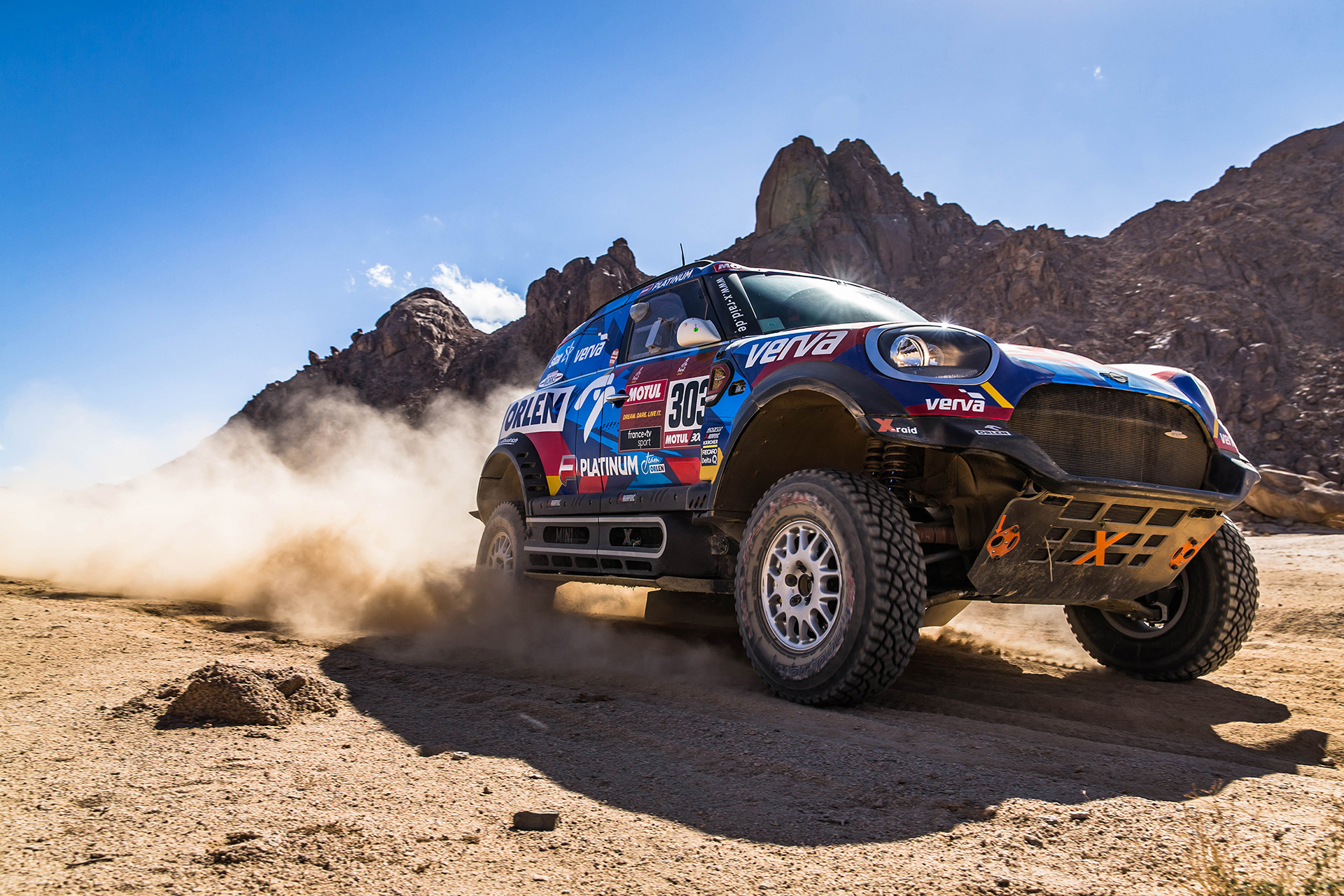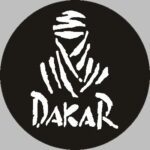Kingdom of sand
Covering the event for the world’s media means facing the same gruelling schedule plus a whole host of technology challenges on top. For Leon Jansen and the Dakar Press Team, reliable power for their equipment is essential. Their tough and dependable Anton/Bauer DIONIC XT batteries provide that reassurance.
Leon began his career covering DTM (the German Touring Car Masters) and Formula 1 for Dutch broadcaster SBS (now Talpa) and De Telegraaf. In 2003, a chance encounter at an exhibition in Amsterdam saw him meet a team taking part in the truck category of the Dakar Rally. Discovering that they had no plans to cover their participation for their sponsors, Leon explained his motor sport credentials and they invited him to document the action. The Dakar Press Team was born.
Today, the team operates with the Dutch Press Association to supply pictures of the rally to international press agencies, as well as creating videos from behind the scenes charting the adventures of the team. Camera support means tripods and fluid heads from Sachtler while Anton/Bauer batteries provide mobile power.

Rolling in the heat – DIONIC XT powering Stage 8 – Wadi Al Dawasir
Toughest of the tough
Originally a race from Paris, France to Dakar, Senegal, the political situation in central Africa saw the rally move to South America in 2009, ending Dakar’s 30-year reign as the finish line. In 2020, the formidable endurance trek moved to Saudi Arabia in a new challenge to pit driver and vehicle against mile after mile of wheel-swallowing sand, water, dirt, and rocks in the searing heat of the desert. The press team would need to traverse this terrain every day to reach the photo point before the rally riders arrive.
Starting in Jeddah and finishing in the Saudi Arabian capital of Riyadh, 342 vehicles set out to complete 12 stages, covering 5,000 miles of punishing terrain hoping to be crowned ‘toughest of the tough’. A real-life Wacky Races with 144 bikes, 23 quads, 83 cars, 46 SSVs and 46 trucks plus the Press Team’s own Volkswagen Amarok DC 4Motion and Volkswagen T6 4Motion (AKA the party bus).

Dakar Press Team VW Amarok and T6 ‘Party Bus’
Every ounce counts
Although the Team’s Amarok and T6 vehicles are big, space is at a premium and weight is carefully considered. “We need to use fairly small gear,” says Leon. “Three people with luggage, supplies for two weeks in the desert, our video and photo gear plus all the tools to do the maintenance of the cars quickly adds up”. Anton/Bauer’s V-Mount DIONIC XT batteries provided the perfect power solution for the team. Weighing in at 1.7lbs (0.8kg), the compact DIONIC XT 90 batteries deliver an impressive power to weight ratio, capable of running the team’s lightweight Sony a7 rigs continuously for an entire day. “The more kilos you have, the more difficulty you have when driving in the desert,” says Leon. “If your vehicle is really heavy, you will have trouble driving into the immense sand dunes. The struggle for space and weight is real”. He adds, “Our T6 was 4000 kilos (8,800 lbs) with people. That is an enormous weight when you are going off-road.

Right Place – Right Time
Outside of the vehicles, the weight of their camera rig is also an issue as the team treks through the desert to find the perfect shots. “We walk a long distance every day at each location”, says Leon. “We’re constantly moving to find another angle or location to provide some variety in the images. That’s another reason for our gear to be light”.
“We walk a long distance every day at each location, constantly moving to find another angle or location to provide some variety in the images. That’s another reason for our gear to be light.”
Leon JansenDakar Press Team
Racing the racers
In the Dakar, every day is a long day. After each day of shooting photos, preparing them for export to post online and endless driving, the team set their tents up in the desert near the next photo point to get a few hours’ sleep ahead of the first racers. “The first bike will be our alarm clock,” says Leon. “We jump out of the tent and start producing footage. First the bikers, then the Quads, then the cars and then the trucks roll past. We finish with the photo/video production by late afternoon. By that time, the track is totally ruined by all the competitors’ vehicles, so we have a challenge to find our way back to the main road”. The team then rushes to a spot where they can edit the pictures. “We can do it in the T6 but it’s more convenient to get to a tent station where they have Wi-Fi and a cold drink”, says Leon. After a few hours of couple editing and uploading by satellite to the media, it’s time to grab some food and start all over again. “There is no time to relax,” says Leon, “not even on the Rally rest days where we have to capture all the images of the competitors and the mechanics who are working on the vehicles. Every day, every minute something could happen that you didn’t expect, so it’s two weeks of a lot of surprises and challenges”.
The heat is on, and off
Temperatures in the Saudi desert fluctuate between extremes. During the day the scorching sun raises temperatures to over 100°F while at night the lack of trees means heat is not trapped, causing temperatures to plummet to below freezing. While the performance of some electronic equipment can deteriorate in extremes of hot or cold, the operating temperature of DIONIC batteries from -4°F to 140°F (-20°C to 60°C) meant that the team could depend on consistently reliable power miles from civilisation, using the batteries to power not only their camera gear but other devices too via the USB ports. “The Anton/Bauer batteries were really reliable,” says Leon. “It didn’t matter whether it was cold, hot, sandy or dusty they just always worked”.
“The Anton/Bauer batteries were really reliable. It didn’t matter whether it was cold, hot, sandy or dusty they just always worked.”
Leon JansenDakar Press Team
The future is green
The Team has recently restyled itself to become “Green Team” and has started a plan to create a zero-emission vehicle, taking part in the Rally as a press team. “Our goal is to start the Dakar Rally in 2022 with a hydrogen vehicle that we are developing at the moment.” Says Leon. “Sometimes, when you are sitting alone on a dune, you have some crazy thoughts. We started as photographers and now we are developing vehicles.” The team’s “E-Lions” project car will be developed with Volkswagen. “We will remove all the diesel-powered parts,” he says, “we will replace the drivetrain with an electric drivetrain, combine it with fuel cell technology, add some hydrogen fuel tanks and we’ll have 100% zero emissions with a range of about 800km more than capable of driving through the dunes.” Adding, “it’s our chance to make a change and to use all the communication channels that we have developed in the last 15-20 years to spread the green message.”

